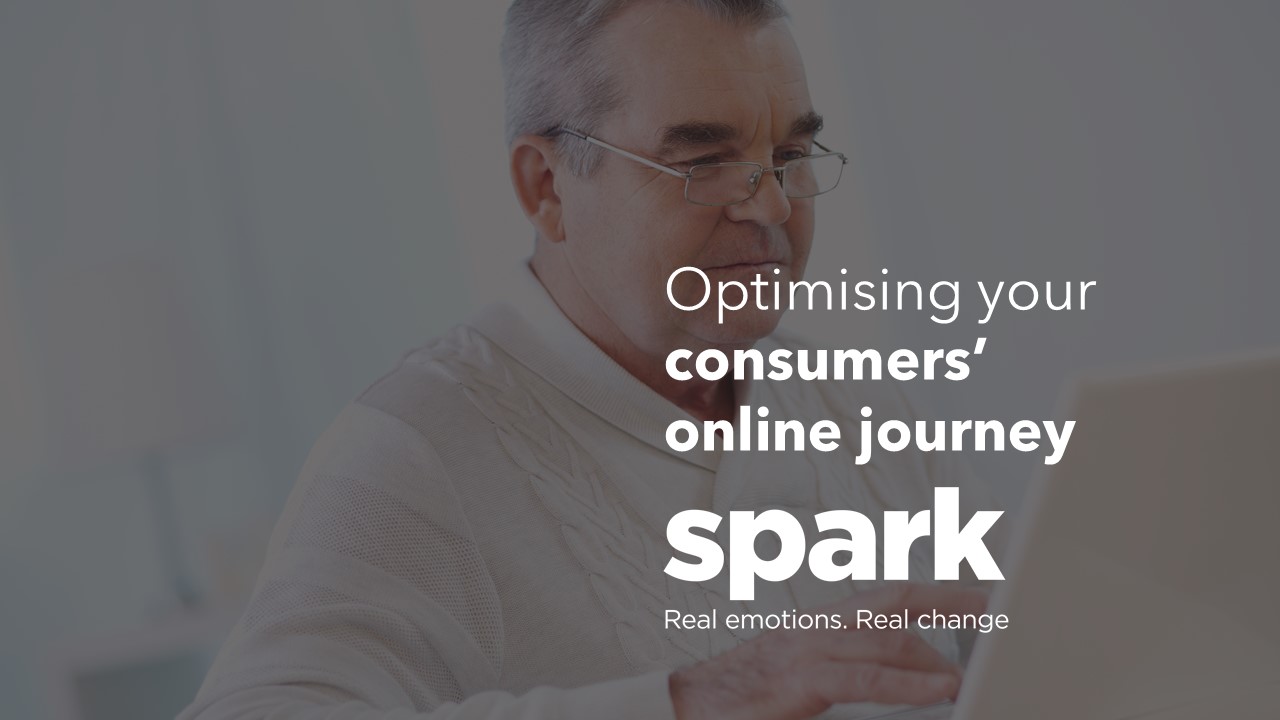The rapid rise of online
The retail landscape is consistently changing and evolving. The rise of the internet and e-commerce has been both a challenge and an opportunity for businesses across every sector for over 25 years.
Here at Spark, we have been fortunate enough to help some of the world’s biggest online retailers optimise their online consumer journey, by understanding how they behave online and the reasons behind why they behave as they do.
Recent global events have massively accelerated the growth of online shopping across every channel.
A study undertaken by Waitrose in the UK, revealed that 75% of UK consumers now do at least some grocery shopping online, with the biggest growth among shoppers aged over 55.
Kantar recently published that online accounted for 13% of all grocery shops in the UK, double the figure seen in 2016, and likely only to be limited by capacity rather than demand.
A separate piece of work conducted by Retail Economics found that almost half of consumers feel that the way they shop has changed permanently. Items previously seen as interactive, that shoppers may have wanted to touch, feel, and smell in-store are now being purchased based solely on images and text.
Outside of shopping, it is predicted that the online gambling market will grow by 21% annually, and that figure could increase even further with the recent closure of Betting shops on the high street due to Covid-19.

So, what does that mean?
Understanding how their consumers behave online was already a difficult task for brands and retailers, but the frightening pace of change we have seen recently means that this is probably the single biggest challenge facing our clients today.
Whether we are adding a few favourites to our grocery shop as we watch TV, bidding on an item on eBay, placing a bet, or browsing for holidays as we sit on the loo (it’s ok, we all do it!), each customer journey has different touchpoints and motivations that we need to understand.
While shopping online and shopping in-store can be seen as vastly different practices, there are still the same human behavioural traits that research methods need to take into consideration:
- Much of shopper behaviour online is still sub-conscious (as we would see in store) – many shoppers head straight to favourite or previously purchased items, essentially executing a routine stock up mission. So how do we communicate our brands when shoppers may not be exposed to them at all as they would be walking down a supermarket aisle?
- Purchasing health & beauty products can be a tactile, interactive, and experiential shopping mission in-store. How do we create the same emotive experience shoppers have in-store, and drive purchasing behaviour on a 6-inch screen?
- When shoppers are browsing for different products, how can we make that experience easier for them, and facilitate the actual shopping and decision making that would be custom in a physical shopping environment?
One of our retail partners in the US recently approached us with exactly these questions, so we worked with them to understand how shoppers were using their e-commerce site.
During our research we discovered that they were displaying too many products on screen at one time, creating overchoice effect for shoppers. This led to them becoming fatigued and often navigating away without purchasing.
Following our research, we were able to identify the optimum way to display products as part of search results to avoid shoppers suffering from choice overload, whilst still maximising visibility for as many products as possible.

How we can help?
At Spark, we use a range of cutting-edge research techniques to help our partners understand how their consumers really behave online.
Our unique tools enable us to establish shoppers’ emotional engagement when shopping online and the vital ‘why’ that is driving their actions.
We have helped our partners across different channels to optimise their online strategy and touchpoints by:
- Understanding how consumers visually process each website
- Establishing a detailed knowledge of how shoppers behave online
- Clearly identifying how shoppers feel when shopping online
- Establishing the reasons why a shopper decides to buy (or not)
- Understanding the role of each website communication channel
However, as previously mentioned, due to online shopper behaviour often being sub-conscious (as we similarly see in-store), it is not enough to simply just ask shoppers about their shopping experience.
Our research approach takes this into account and provides a 360˚ view of how consumers behave online by combining some of our class-leading research techniques which can be followed on mobile, desktop or laptop devices.
Eye tracking – This reveals where consumers visual attention is on the page in front of them, and what information is processed both consciously and sub-consciously
Detailed behaviour analysis – Using a combination of screen and video capture, we can analyse not only how consumers navigate and use the website, but also how they are physically behaving as they shop.
Unaccompanied shops – Once the shopping trip is complete, we use the footage as a prompt to unlock the shopper’s working memory, as we collaboratively dissect and analyse their behaviour.
Xtraviews – We are able to measure shopper attitudes, triggers & barriers, and emotional engagement with an Xtraview interview with facial coding.

Why us?
Many of our clients already know what shoppers do and don’t click on when shopping online (this is easy enough to establish), but most are not able to answer to the crucial question: Why?
We partnered with a food and drink brand that wished to optimise their communication strategy on grocery websites and understand the most effective way to prompt shoppers to buy their brand. They already knew what shoppers were buying, but not why some elements of their communication were working better than others.
We were able to establish which parts of the online shopper journey were conducted in system 1 mode (sub-conscious), where it would be difficult to get through to shoppers, and where in the online journey these shoppers switched into system 2 mode (conscious), where they would be more receptive to paid media, and open to persuasion.
At this stage of the online journey we were then able to recommend the optimum position on page and call to action for paid media.
As a result, the client was able to significantly streamline their investment, while growing click through rates.
The growth of online was inevitable, but the pace of change is unprecedented, and the sheer breadth of the online landscape means that we cannot simply apply what we already know about our consumers behaviour in-store to their online journey.
Only by understanding how our consumers really behave in this ever-growing channel, and even more importantly establishing why they act as they do, will we be able to optimise our online offering to meet their needs, and provide the best possible shopping experience in this modern shopping landscape.

Written by Andy Bromley, Director of Operations at Spark Emotions
If you have any questions, feel free to reach out to Andy via email andy.bromley@sparkemotions.com or connect with him on LinkedIn







One thought on “Optimising your consumers’ online journey”